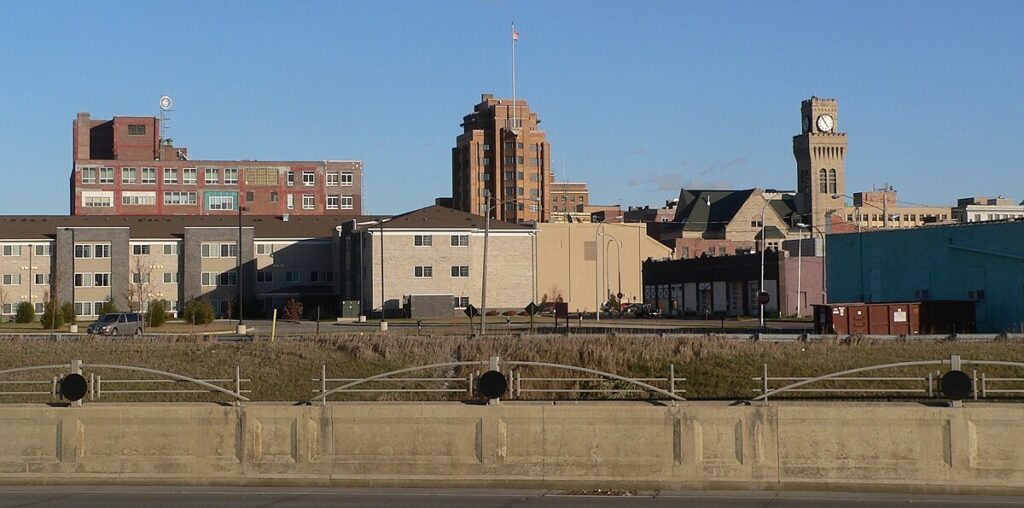
Moving to Sioux City, Iowa: A Comprehensive Relocation Guide
Considering moving to Sioux City, Iowa? This historic tri-state city offers affordable living, meatpacking heritage, and Missouri River location. With approximately 85,000 residents in 2025 (metro 145,000+), Sioux City combines working-class character with riverfront beauty and Northwest Iowa’s largest city.
Demographic Profile to Consider If Moving to Sioux City:
Sioux City’s 2025 population is approximately 85,000 residents, making it Iowa’s fourth-largest city, at the convergence of Iowa, Nebraska, and South Dakota along the Missouri River. The median age is around 35 years, with working families, meatpacking workers, and diverse residents. The population is approximately 82% White, 8% Hispanic, 5% Black or African American, 3% Asian, with growing Latino community. Sioux City features historic downtown, riverfront development, meatpacking industry presence, and serves as a tri-state regional hub. The city attracts working families, meatpacking employees, and those seeking affordable Northwest Iowa living. Sioux City appeals to working-class residents prioritizing affordability and tri-state employment access. The community balances meatpacking heritage with riverfront revitalization and maintaining regional center status. Find trusted local services for moving, living, and working in Sioux City.Sioux City Relocation Directory
Cost of Living to Consider If Moving to Sioux City:
Sioux City offers exceptional affordability. Median home values range from $140,000 to $200,000 in 2025, among Iowa’s most affordable cities while providing tri-state metro amenities. The median household income is approximately $55,000. Rental properties average $750 to $1,100 monthly. Iowa has no state income tax on retirement income; individual income tax is progressive 0.33%-8.53%. Property taxes are moderate. Overall cost of living is very low, making Sioux City highly attractive for working families, meatpacking workers, and those seeking maximum Iowa affordability. The city provides tremendous value with Missouri River access. Housing costs create exceptional accessibility with meatpacking industry providing stable working-class wages.
Economy and Job Market:
Sioux City’s economy centers on meatpacking/food processing, healthcare, and manufacturing. Major employers include Tyson Fresh Meats (massive meatpacking operation), Seaboard Triumph Foods (pork processing), CF Industries (fertilizer), MercyOne Siouxland Medical Center, UnityPoint Health-St. Luke’s, and various manufacturers. The meatpacking industry dominates employment and economy. Healthcare serves the tri-state region. Typical industries include food processing, healthcare, manufacturing, and services. The economy depends heavily on meatpacking though healthcare provides stability. Wages reflect working-class Midwest levels with meatpacking offering union jobs. The job market attracts working-class families and immigrants seeking meatpacking employment.
Education:
Sioux City Community School District serves city students with multiple high schools including East, North, and West. School quality varies requiring family research. Morningside University, Briar Cliff University, and Western Iowa Tech Community College provide higher education. The educational infrastructure serves the working-class, diverse population with programs supporting immigrant and Latino students.
Recreation and Lifestyle:
Sioux City offers Missouri River location with riverfront parks and trails, historic downtown along Fourth Street with Pearl Street entertainment district, and the Sioux City Art Center. Residents enjoy Sergeant Floyd Monument (first National Historic Landmark west of Mississippi), Lewis and Clark Interpretive Center, Tyson Events Center hosting concerts and Sioux City Musketeers hockey, and Stone State Park. The lifestyle emphasizes affordable working-class living, riverfront recreation, tri-state access, and Midwest values. The four-season climate enables varied activities. The community values meatpacking heritage (industry built the city), affordability, working-class identity, and Missouri River heritage. Living in Sioux City means accepting meatpacking industry dominance and associated character, working-class atmosphere, geographic isolation (Northwest Iowa corner), and some urban challenges while enjoying exceptional affordability, stable meatpacking employment with union wages, Missouri River beauty, and tri-state access creating Northwest Iowa’s working-class hub where meatpacking meets Missouri River.
Healthcare and Services:
Sioux City residents access comprehensive healthcare through MercyOne Siouxland Medical Center and UnityPoint Health-St. Luke’s. The hospitals serve the tri-state region as Northwest Iowa’s medical hub with quality care.
Transportation:
Sioux City is accessed via Interstate 29, U.S. Route 20, U.S. Route 75, and various corridors at tri-state junction. Sioux Gateway Airport provides limited commercial service. Sioux City Transit operates bus service. Most residents use personal vehicles. The tri-state location provides access to South Dakota and Nebraska employment. Typical travel times to major metros are substantial (Omaha 90 minutes).
Conclusion:
Moving to Sioux City in 2025 offers affordable Northwest Iowa living with meatpacking employment, Missouri River location, and tri-state access. The city’s combination of exceptionally low housing costs, stable meatpacking jobs, and riverfront beauty makes it ideal for working families, meatpacking workers, and those seeking Iowa’s most affordable mid-sized city where meatpacking heritage meets Missouri River and exceptional value defines the tri-state working-class hub.

